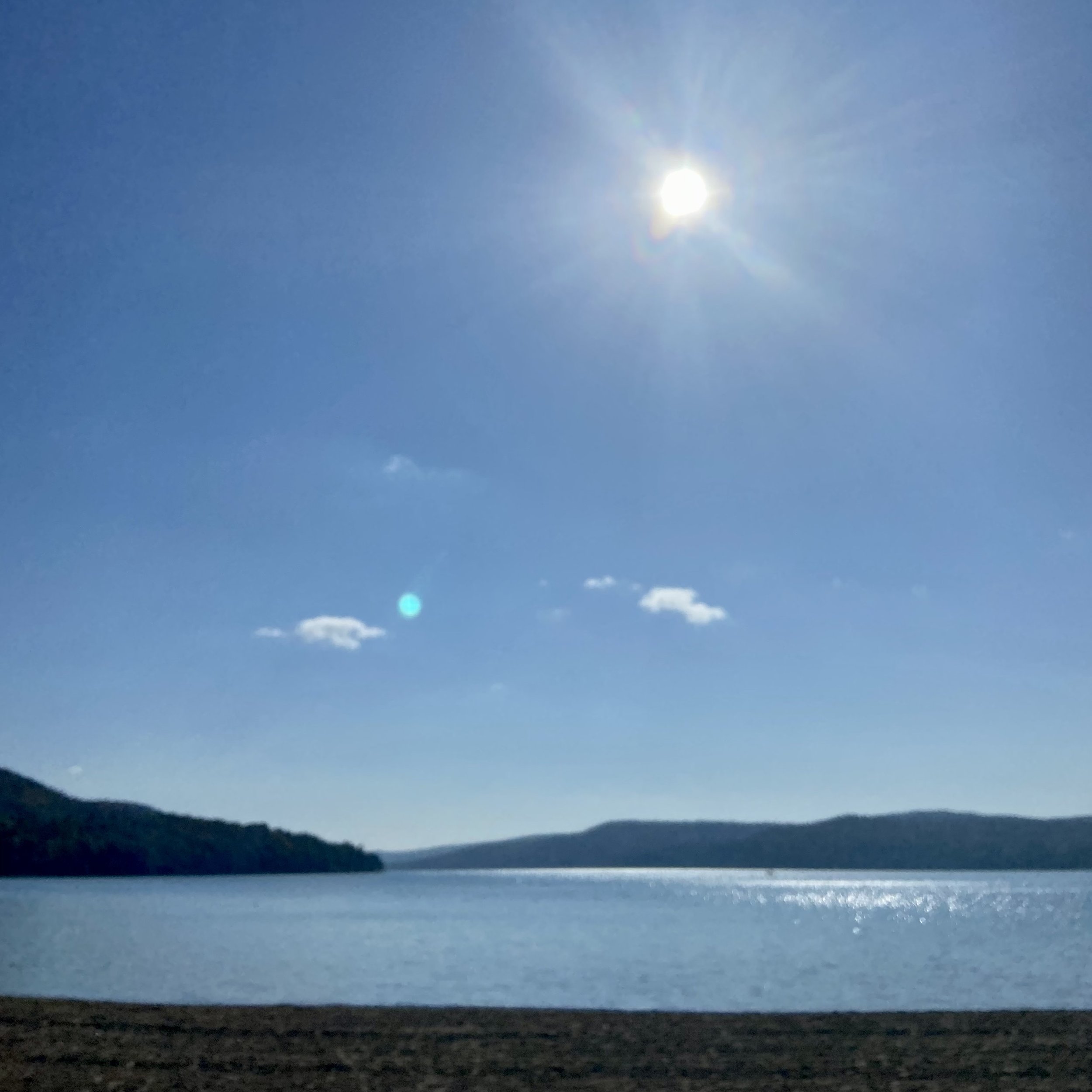[un]grounded
Another season, another residency. When I set out for Leonardsville in central New York state, in early September, I packed the studio materials to do some work where grief was not the impetus. I wanted to return to my exploration of gesture as both a reflection of mindset and how physically shifting one’s gesture works as a catalyst for a shift in mindset.
But I called it in my previous entry: grief is something you step in and out of. And you are not in control of your feet.
So although I packed the supplies and the intentions to move forward, once I settled in at the Horned Dorset Colony residency -in a hamlet with a population of 243, consisting of a handful of intersecting streets straddling NY state route 8 - I waded back into grief.
Preparing my parents’ home to sell- culminating in a massive yard sale where the stuff of their lives covered their parking lot of a driveway- was completed only a week before setting out for this residency. And full disclosure: packed in my car was a cardboard box of my parents’ ephemera and detritus, stuff destined for the dustbin, post-yard sale. My last minute decision to reclaim and pack these bits belies my intention of moving on from art about my grief.
The word grief comes from the old French word grever - a verb, meaning “to burden”. I came to the residency carrying all sorts of burden: the literal weight of the box in my hands, the heavy, clouded space the loss of my parents occupies in my mind and the oppressive mindfuck of the inability to really mourn them because I cannot distance myself enough to grieve them fully. As executor, I am in too deep: in the intimate and private world of their junk drawers, the underneaths of their beds and couches, their bank accounts.
What I wanted was to feel weightless. I asked Roberta and Kingsley, residency directors at HDC, where I could find water to float in. They suggested Glimmerglass State Park and although officially closed for the season, you could enter the water at your own risk.
Looking out over Otsego Lake at Glimmerglass State Park
Every time I went to find weightlessness there, I was the only one in the water. Without fail, I was interrogated as I emerged: it must be so cold – aren’t you freezing?
Maybe I sought some degree of numbness; I certainly appreciated the lingering dopamine hit after each swim. But what I really sought was a place where it felt appropriate that my feet couldn’t find solid ground. It is OK to be ungrounded in water. In water, under water, I explore the void, the void of not knowing who I am in my reconfigured family of origin. Water holds me as I learn to accept the ungroundedness. My body floating in water is where it needs to be in to approach the work of grieving.
I looked for art historical imagery of bodies experiencing grief: so many Mary Magdalens confronted with the dead body of someone she loved. I tried on one of her poses as sculpted by Niccolò dell’ Arca in the late 1400s and could feel the performative hysteria, the loud arrangement of explosive grief; her pose did not align with my grief. But there was something in her startled, open hand that resonated. I took that hand’s gesture and had it pull the rest of the body into a pose that speaks to my experience of grief in water, adjusting the art historical pose to make it bespoke to my lived experience.
I adjusted a gesture of grief from art history to resonate better with my experience a couple of more times while at HDC. I did a small oil study of Käthe Kollwitz’s etching, Woman with a dead child, my floating pose Spiralling upwards from the heavy grief-mound arrangement of the mother’s body.
And towards the end of the residency,I began a second large piece on unstretched canvas - still very much unresolved - working with the figure of he laundress carrying a heavy load from Honore Daumier’s The Burden.
In these pieces, I'm still making art about the loss of my parents and working through my grief. But I can see that I am also exploring the work I was hoping to return to in this residency: how trying on art historical gestures can allow us to critically examine our current mindset and make physical adjustments that reflect the mindset we seek.

![studio view of WIP [un] grounded](https://images.squarespace-cdn.com/content/v1/630cb5cba964ca5d8d61632c/1699369685885-6CZQ4SIJKICHZ1GJX1M6/file-5FA95F5E-3267-41A4-9762-D6C69F958A92.jpeg)




![[un]grounded, finished (for now)](https://images.squarespace-cdn.com/content/v1/630cb5cba964ca5d8d61632c/1699369589908-546PUOMTYBOOY217HFPM/file-15A56B57-5250-4A65-AAAF-F2B34820D9D1.jpeg)




